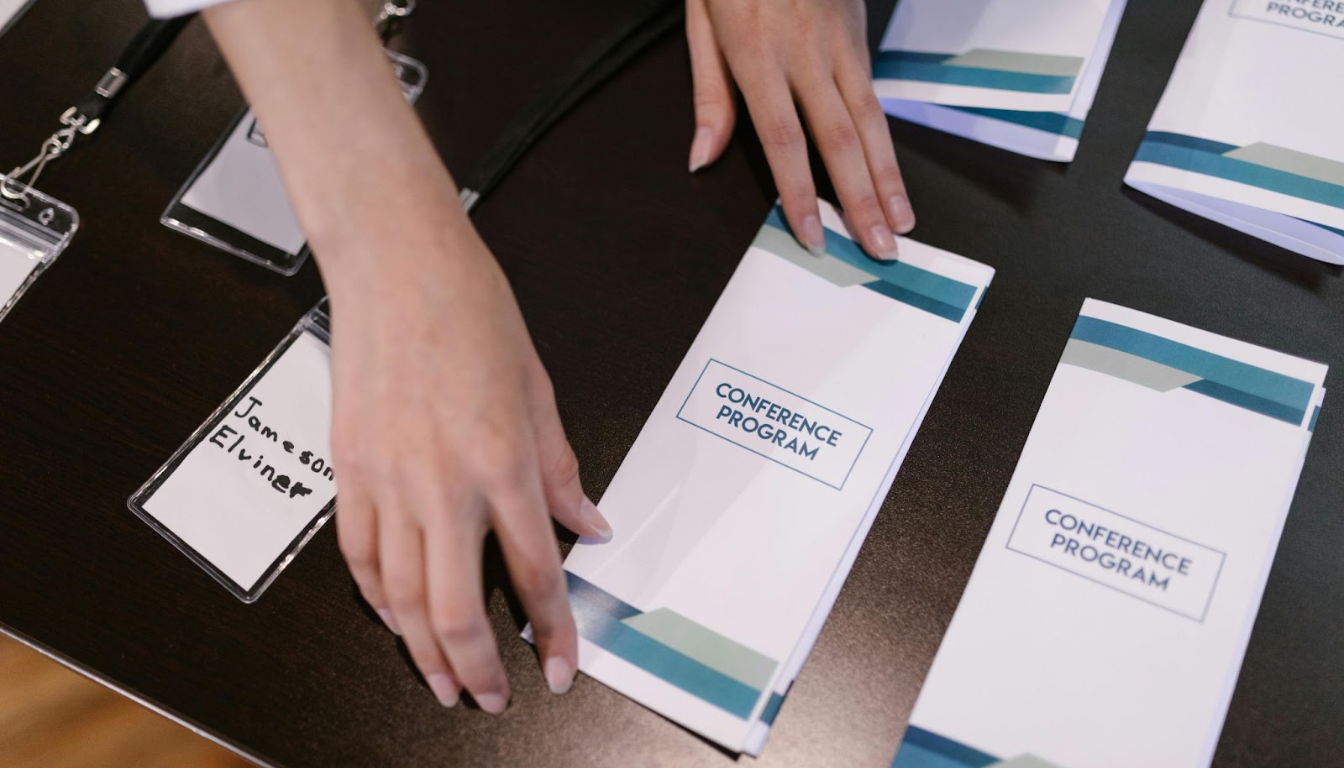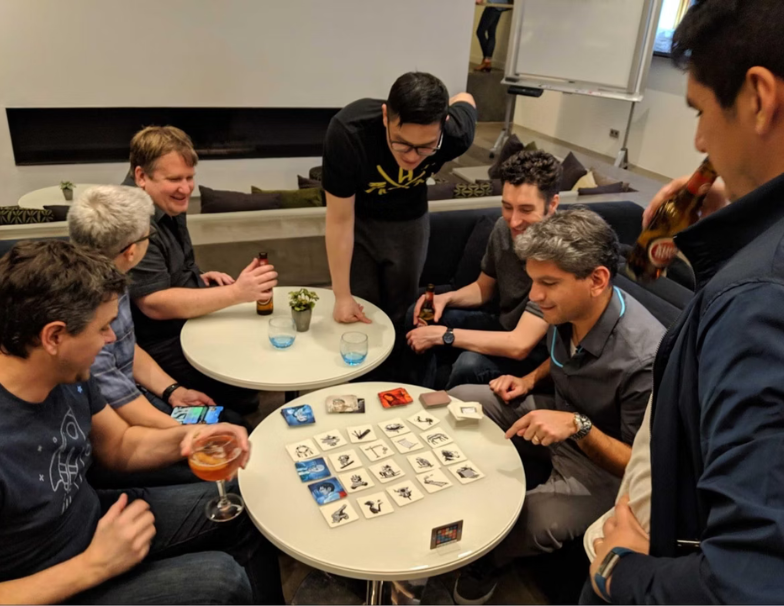The Perfect Retreat Agenda: Ideas for a Successful and Fun Team Experience

Need a retreat agenda? This guide will show you how to plan effective activities, schedule meals, and select the perfect venue for your team retreat.
Key Takeaways
- A well-structured retreat agenda enhances engagement, productivity, and team cohesion by balancing work sessions with leisure activities.
- Selecting the right venue and planning meals are critical for fostering connections and ensuring a positive retreat experience.
- Measuring success through employee feedback and performance metrics is essential for evaluating the effectiveness of the retreat and guiding future improvements.
How to Create a Company Retreat Agenda

A well-structured company retreat agenda maximizes the impact of your offsite gathering. Thoughtful planning ensures every event is engaging, aligns with company goals, and stays within budget. While challenging, considering factors like duration, location, and suitable activities can significantly improve the outcome.
The right agenda helps avoid wasted time and ensures a successful retreat.
Determine the Length of Your Retreat
One of the first steps in planning a company retreat is determining its length. This decision should be guided by:
- Your team goals
- Budget
- The personal commitments of your attendees
A retreat can range from a single day to several days, depending on what you aim to achieve.
Matching the retreat duration with your goals and expected outcomes maximizes participation and ensures success.
Structure the Retreat for Balance
A balanced retreat agenda fosters both productivity and relaxation. Mixing work meetings, strategy sessions, and fun activities keeps attendees engaged and motivated, creating a good balance.
A well-structured retreat should balance relaxation, learning, and meaningful activities, ultimately enhancing employee engagement and productivity.
First Day: Arrival and Welcome
The first day of the retreat sets the tone for the entire team event. As team members arrive, informal interactions are essential for creating a relaxed and open atmosphere to encourage buy in.
Host a welcome reception in the evening, followed by a full-team dinner. Icebreaker activities during this time help everyone connect and feel comfortable.
Work Days: Structured Sessions and Team Building
The core of the retreat involves structured sessions and team-building activities. Organizational group presentations and individual workshops allow diverse ideas to be shared, while activities like water skiing or yoga can push the team outside their comfort zone and enhance team bonding.
Wellness activities and good food-focused events further enrich the experience, promoting a delicious meal, relaxing, and rest and health.
Final Day: Fun Activities and Departure
The final day of the retreat should be reserved for fun activities and unstructured time, which encourages bonding and creativity among participants. This approach ensures that everyone leaves the retreat feeling refreshed and connected, ready to apply their experiences to their day-to-day work.
Benefits of a Well-Planned Retreat Agenda

A well-structured company retreat agenda offers numerous benefits, including improved team cohesion through shared experiences, enhanced collaboration, and increased engagement with planned activities. Thoughtful planning can significantly boost the effectiveness and enjoyment of a retreat, fostering creativity and innovation within the team.
Clear goals beforehand guide the planning process, ensuring the retreat aligns with company objectives and helps participants decide on their future plan actions.
Improved Employee Engagement
Engaged employees are happier, more productive, and more likely to stay with the company. A well-structured retreat boosts morale and productivity through collaborative activities and learning opportunities.
Icebreaker activities, learning lunches, and employee-led clubs are just a few examples of how to encourage engagement and help employees feel heard and valued.
Strengthened Company Culture
Shared experiences and collaborative activities build a strong company culture. Outdoor retreats, unique venues, and memorable experiences foster team bonding and unity.
Successful engagement initiatives and effective leadership development programs are often correlated with high retention rates, further strengthening company culture.
Enhanced Productivity
Retreats provide an excellent opportunity for strategic planning discussions, increasing team alignment with company objectives. Morning meetings and structured sessions enhance focus and engagement, leading to higher productivity post-corporate retreat.
Monitoring key performance indicators (KPIs) such as employee engagement levels and productivity rates is crucial for evaluating the effectiveness of a retreat.
Key Elements to Include in Your Retreat Agenda

A successful retreat includes a mix of structured sessions and free time during the week. Wellness activities, co-working spaces, and tailored session plans enhance the overall experience for the next retreat.
Offsite specializes in designing purposeful and productive retreat experiences that align with team goals and company culture.
Icebreaker Activities
Icebreaker activities foster connections and create a welcoming atmosphere. Personal bios submitted before the retreat encourage participants to share deeper insights about themselves as a person in person. This is where the breaks in conversation can lead to meaningful exchanges.
These activities set a positive tone for the retreat and help participants feel a sense of comfort around each other.
Strategy Sessions
Strategy sessions align team efforts with company goals and future planning. Shared experiences during these sessions reinforce organizational values and beliefs, ensuring the team works towards common objectives.
Team Building Activities
Diverse team-building activities foster collaboration and camaraderie. These exercises break down barriers and create unity among employees, leading to stronger interpersonal bonds, enhanced productivity, and improved skills.
Creative Thinking Workshops
Creative thinking workshops encourage self-expression and foster learning among team members. These workshops enhance team bonding by providing a fun and engaging way to collaborate and innovate.
Outdoor settings and unconventional venues can further stimulate creativity and inspire innovative thinking to explore a diverse set of ways.
Choosing the Right Venue

Selecting the right venue is vital for a successful retreat. Eco-conscious venues, accessible locations, and all-inclusive options enhance the retreat experience.
Effective planning integrates venue selection, adaptable scheduling, and logistical management for a smooth event.
Outdoor Venues
Outdoor venues can offer a refreshing change from the office environment, promoting creativity and team bonding. Ideal venues for outdoor one-day retreats include parks, nature reserves, and farms.
Safety concerns, weather conditions, and available space for participants are important considerations when planning outdoor activities.
Co-Working Spaces
Flexible co-working spaces are ideal for business-focused retreats. These spaces offer a hybrid experience that combines professional resources with casual collaboration, enhancing focus and creativity for businesses.
Co-working spaces enable teams and colleagues to engage in productive work while they benefit from community interaction.
Unique Locations
Unique locations enhance the retreat experience by blending relaxation and professional amenities. These venues provide the ideal setting for team bonding and productivity, ensuring a memorable retreat.
Planning Meals and Snacks

Planning meals and snacks is a crucial aspect of enhancing the retreat experience. Meals connect attendees, reduce anxiety, encourage conversations, and strengthen team bonds. High-quality meals help maintain energy levels throughout the retreat, ensuring that participants remain engaged and productive.
Catering Options
Choosing catering options that accommodate various dietary needs and preferences creates an inclusive environment. Understanding dietary preferences in advance ensures catered meals meet everyone’s needs, enhancing team bonding by making everyone feel valued.
Group Dining Experiences
Group dining experiences foster team bonding and reduce social anxiety. Shared meals encourage natural conversation and interaction among groups, leading to stronger relationships and enhanced teamwork.
Food-Focused Activities
Food-focused activities, like cooking challenges, enhance team bonding by allowing teams to collaborate creatively while enjoying the culinary process. These activities foster teamwork and provide a fun, relaxed atmosphere, making the retreat more enjoyable and memorable.
Scheduling and Logistics
Scheduling and logistics are critical for a successful retreat. Consider transportation, accessibility, and project coverage to ensure a smooth event.
Effective planning prevents poor performance and enhances the overall experience for attendees.
Optimal Timing
Choosing the right time for a retreat affects participant comfort, attendance, and overall costs. Scheduling high-energy activities in the morning leverages participants’ freshness and focus, while including downtime allows team members to relax for a few hours and foster informal interactions.
Finalizing the retreat schedule well in advance helps participants prepare mentally and logistically.
Transportation Arrangements
Appropriate transportation arrangements ensure a smooth retreat experience. Consider accessibility and ADA compliance for all attendees, and evaluate staff comfort concerning the distance to the retreat location.
For a one-day retreat, consider the following transportation options:
- Hiring a coach to transport the group, which is effective.
- Chartering a bus or renting a vehicle if activities are far from your lodging.
- Using simpler transportation if the retreat location is walkable.
Managing Accommodations
Booking accommodations early ensures availability and favorable options. Providing various room arrangements caters to different employee preferences, enhancing the overall retreat experience.
Handling logistical details in advance allows participants to focus on the retreat’s activities and goals.
Measuring Success
Measuring the success of a retreat helps understand its impact and make necessary improvements for future events. Feedback mechanisms like surveys and performance evaluations provide valuable insights.
Monitoring key performance indicators (KPIs) and retention rates gauges the retreat’s effectiveness in enhancing productivity and employee satisfaction.
Employee Surveys
Employee surveys gather honest feedback from staff members. Anonymous surveys allow employees to provide feedback without fear of repercussions, improving the quality and honesty of responses.
This feedback helps evaluate the retreat’s success and identify areas for improvement.
Performance Metrics
Performance metrics gauge a retreat’s impact on productivity. Balanced agendas that mix work and fun lead to higher productivity post-retreat, as time spent in these activities enhances overall effectiveness.
Monitoring retention rates indicates employee satisfaction and overall engagement, providing insights into the retreat’s effectiveness.
Retention Rates
Retention rates indicate overall employee satisfaction and engagement. Tracking them after a retreat offers insights into employee satisfaction and overall event effectiveness.
A reduction in turnover rates post-retreat suggests employees feel more valued and engaged with their workplace.
Summary
A well-planned retreat agenda is essential for maximizing the impact of your offsite gathering. By carefully considering the length, structure, venue, meals, and logistics, you can create a successful retreat that enhances team cohesion, strengthens company culture, and boosts productivity. Remember to measure the retreat’s success through feedback and performance metrics to make necessary improvements for future retreats. Implement these ideas, and watch your team return to work more connected, engaged, and productive.
FAQs
- What is the benefit of using Offsite for corporate retreat planning?
Using Offsite for corporate retreat planning streamlines the process, making it faster, easier, and more cost-effective than managing it independently. This can lead to significant time savings and reduced organizational stress.
- How much can users save on venue bookings through Offsite?
Users can save up to 50% on venue bookings through Offsite by taking advantage of VIP service, concessions, and favorable contract terms. This significant discount can enhance your overall event planning experience.
- What type of discounts does Offsite negotiate for its users?
Offsite negotiates pre-negotiated rates, allowing users to benefit from discounts of up to 50% on room blocks, meeting spaces, and other budget items.
- What kind of support does Offsite offer for corporate retreat planning?
Offsite provides comprehensive retreat planning services at a flat, per-person rate, ensuring a smooth and hassle-free booking experience for corporate events.
You may also like
Unique spaces for your next offsite
Find distinctive venues for your upcoming corporate retreat.
Stay Updated with Our Insights
Get exclusive content and valuable updates directly to you.







